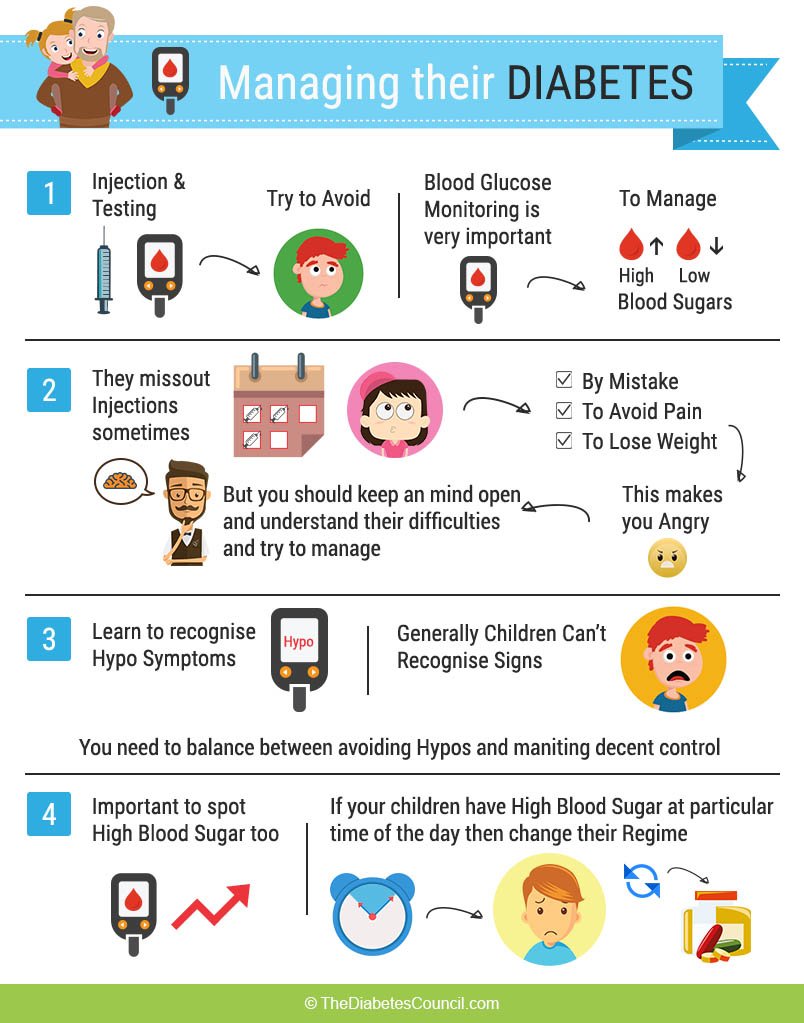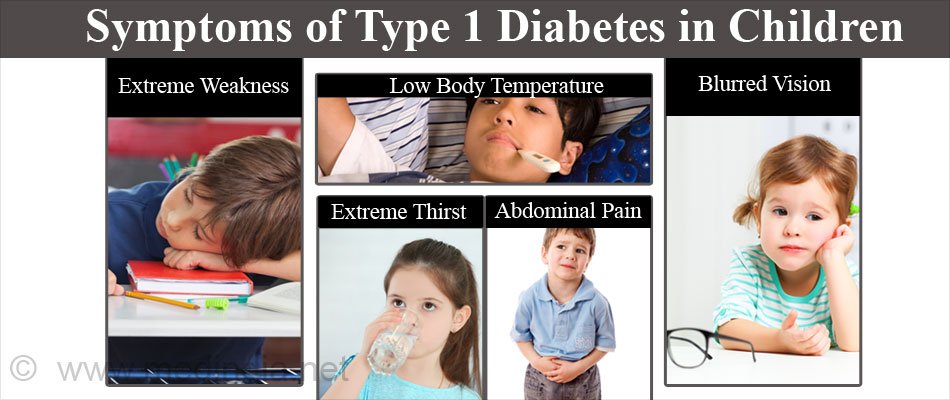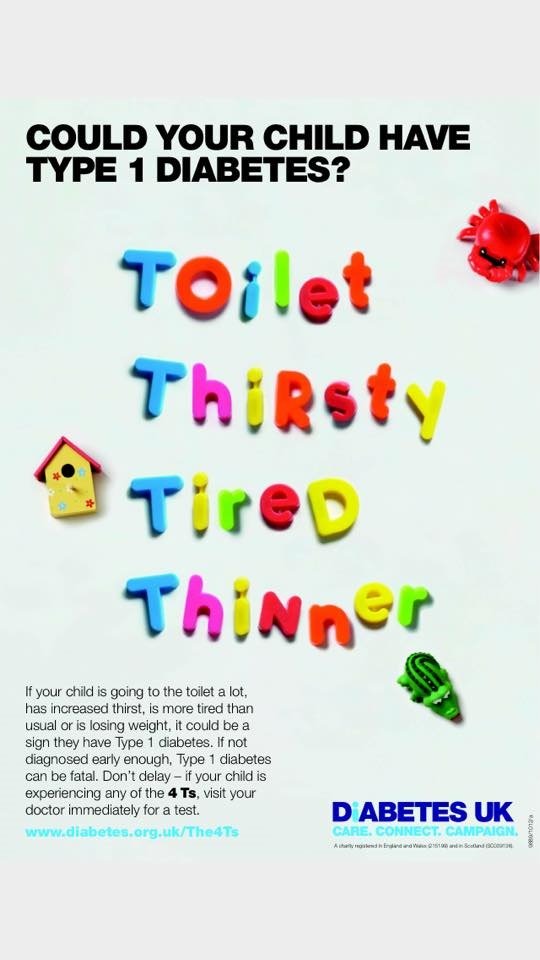When To Call A Doctor
Type 1 diabetes may cause sudden, extreme swings in blood sugar that can be dangerous. If you notice any of the symptoms of diabetes in your child, itâs important to get them a physical exam as soon as possible, so their doctor can begin treatment right away.
The doctor will do a simple urine test to check for glucose in the urine and a finger stick to measure preliminary blood glucose level. A more involved test, called an oral glucose tolerance test, can tell for certain if itâs type 1 diabetes. Your child will need to follow a special diet before this procedure.
If your child has already been diagnosed with type 1 diabetes, call your doctor if you notice any of these signs of a low blood sugar emergency:
What Can The Parents Of Children With Diabetes Do
Keeping a strict eye on the blood glucose levels of your child, avoiding lows and highs, can be a large part of being a parent of a child with diabetes. Parents must be aware that children with diabetes have diet restrictions, and that their activity levels need to be closely monitored.
Initially, and throughout the lifetime of the disease, diabetes can be a serious strain. Patients and their families alike should know that support is available.
Initially, the procedure for management and treatment of the disease can seem very complicated.
Understanding how the disease affects your child, being adaptable and patient, are essential to successfully managing diabetes.
Some things to bear in mind include:
- You may have to deliver insulin injections at first, and even if you do not need to then you should know how to. There are two major delivery sites, above the abdomen and in the thigh, but your healthcare team will elaborate.
- You should become familiar with the symptoms of low blood glucose, and also diabetic ketoacidosis As well as recognising these conditions, you should know what to do if they occur.
- Monitor your childs blood sugar levels, and as soon as they are old enough teach them how to do this. Similarly, as children become older they need to learn how to administer their own insulin injections.
- Make sure that people know your son or daughter is diabetic, and that they also know what to do if the symptoms of low blood glucose manifest themselves.
When Do People First Experience Symptoms Of Type 1 Diabetes
The majority of people with T1D first experience symptoms in childhood, typically between the ages of 4 and 14. A small number, however, develop symptoms in infancy or toddlerhood.
An even smaller subset of people with type 1 diabetes will be diagnosed as adults, after the age of 20. The onset of type 1 diabetes is slower in adults, so they might experience mild symptoms for a longer period of time before diagnosis than children typically do.
Type 1 diabetes symptoms in children look similar to the symptoms in toddlers and babies, with a few notable differences. Mood swings and irritability, for example, can affect anyone with T1D, but this common symptom might be mistaken for an ordinary temper tantrum in preverbal toddlers, or as colic in younger babies.
Type 1 diabetes symptoms in babies and toddlers include weight loss and stunted growth a condition known as failure to thrive which is rare in adults. Failure to thrive might be the only noticeable symptom of T1D in a baby or toddler, since older children can clue parents in to symptoms such as increased urination or blurred vision.
One important thing we need to point out is that type 1 diabetes is often associated with children, but it happens to adults as well, Dr. Christofides says. Adult-onset, or late-onset type 1 diabetes symptoms look slightly different and can be harder to recognize and diagnose as a result.
Also Check: How Long You Can Live With Diabetes
What Symptoms Do Children With Diabetes Exhibit
Like adults, a number of symptoms may give early warning that diabetes has developed.
One or more of the following symptoms may be associated with diabetes:
- Thirst
- Frequent urination
Amongst children, specific symptoms may include stomach aches, headaches and behavioural problems.
Recurrent tummy pains and an unexplainable history of illness should be treated as possible heralds of diabetes.
What Are The Signs And Symptoms Of Type 1 Diabetes

When blood glucose levels become high, some glucose leaves the body through urine. This causes many initial symptoms, which may include:
- Frequent urination
- Thirst
When your body cannot use glucose for energy, you may:
- Feel tired
- Lose weight
When glucose cannot get into the cells, your body starts to use fat for energy. When fat is used for energy, your body makes ketones.
Ketones are in the blood and urine and can cause blood to have more acid. Acid in the blood leads to diabetic ketoacidosis which can make you very sick.
When you have ketones in your blood, you may:
- Have a stomach ache
If you have diabetic ketoacidosis you may:
- Feel sick
Recommended Reading: Does Water And Baking Soda Help Diabetes
How Common Is Type 1 Diabetes
Type 1 diabetes is one of the most common chronic diseases in children. About one in every 400 children in the United States develops type 1 diabetes.
People at any age, from toddlers to adults, can be diagnosed with type 1 diabetes. However, most children with type 1 diabetes are diagnosed between the ages of 4 to 6 or during puberty, between the ages of 10 and 14.
The exact cause of type 1 diabetes is not known. Infections or environmental factors may trigger the immune system to destroy the beta cells. Family history may also contribute to the risk of developing diabetes.
The Transition To Self
Much depends on what age your child is diagnosed with type 1. Those who find out when they are very young may be ready to check and track their own blood sugar by grade school. Others may need more help. It takes time to learn the routine and to become aware of how your body feels when blood sugar is too high or too low.
There’s no fixed age to manage diabetes without help. “Even a teen can’t do it all without a parent’s support, like sharing care at night or on sick days,” says Chiang.
The basic idea is to slowly involve your child more and more in food choices, tracking, listening to their body, and other parts of care. That’s good prep for the day they move out of the house.
Continued
You May Like: Insulin Brands For Type 2 Diabetes
My Child Has Diabetes Now What
Start by educating yourself. Asking questions is the best way to learn about your childs condition, Dr. Godil advises. This helps us explain whats happening, lets you know what to expect and how to manage their condition. It also helps us address your concerns.
Your childs medical team will educate you the on day-to-day management of his or her diabetes. They can also help you understand how to keep their blood sugar stable, provide advice on dietary changes and recommendations for daily physical activity.
We understand that a diabetes diagnosis can affect your whole family, and were here to support you. Because no one is more important than your child.
Maybe It’s A Different Type
If you or someone you know is diagnosed with type 2 diabetes but isnt responding well to the typical treatments for type 2 diabetes, it may be worth a visit to an endocrinologist to determine what type of diabetes is happening. Generally, this requires antibody tests and possibly the measurement of a C-peptide level.
Read Also: Weekly Diet Plan For Type 2 Diabetes
What Are The Symptoms Of Diabetes In Children
Symptoms of diabetes can be subtle but knowing what to look for makes it easier for you to identify them.
These symptoms include:
- Wounds that are slow to heal
If not diagnosed promptly, these symptoms may progress to:
- Dehydration despite drinking
- Changes in mood
Type 1 and Type 2 diabetes share many of the same symptoms. Since symptoms of juvenile diabetes come on quickly, its important to pay attention when your youngster doesnt feel well and look for patterns, says Dr. Godil.
If your child is experiencing any of these symptoms, it doesnt automatically mean they have diabetes. Start by visiting their pediatrician to discuss symptoms. Depending on the situation, your child may need to see a pediatric endocrinologist for additional testing to rule out the possibility of diabetes.
How To Tell If You Or Your Child Has Type 1 Diabetes
With Ilana Halperin MD and Elena Christofides MD
Type 1 diabetes is a permanent condition. That means youll likely have to deal with symptoms at least a few times in your life, no matter how diligently you monitor your blood sugar. Were here to empower you with clear answers to all your pressing Qs.
Also Check: How Long Does Insulin Take To Work
Increased Appetite With Weight Loss
The body relies on insulin to transport sugar into cells to use for energy. Without sufficient levels of insulin, which occurs in type 1 diabetes, the body’s tissues become starved of the energy they need to function properly. Because of this, increased appetite and extreme hunger can result, as well as weight loss from improper nourishment.
While young children may not be able to verbalize that they are hungry, they may express their hunger in other ways, such as increased irritability, crying, and whining. Children may also eat average or larger-than-average portions of food but lose weight instead of gaining it as they grow.
Effective Treatments For Type 1 Diabetes

Insulin
Children with type 1 diabetes need insulin to replace the insulin that the body cannot make anymore. Insulin is a hormone which you cannot take as an oral medicine – you must inject it into the layer of fat under the skin.
Healthy diet
A child with type 1 diabates needs to eat a healthy diet, just like a child without diabetes. They need a regular intake of carbohydrates for growth and development.
Physical activity
Physical activity is the best foundation for management of type 1 diabetes. Physical activity is part of a healthy lifestyle.
Matching insulin to carbohydrates and physical activity
The amount of insulin a child with type 1 diabetes needs depends on the amount of carbohydrates they eat and the amount of physical activity they do. This is called matching insulin to carbohydrates and physical activity.
Learning about diabetes
There is a lot to learn about how to care for a child or young person with diabetes.
This learning involves the whole family, extended family, and other people that are involved in the life of a child or young person – school staff, friends, neighbours, sports coaches, etc.
Education and learning about type 1 diabetes is an ongoing process.
Check Diabetes – physical activity.
Read Also: How Does Diabetes Lead To Renal Failure
What Are The Signs & Symptoms Of Type 1 Diabetes
Type 1 diabetes can come on over time or suddenly. Sometimes, kids dont have diabetes symptoms yet and the condition is discovered when blood or urine tests are done for another reason. Kids who show symptoms may:
- need to pee a lot
- start to wet the bed after having been dry at night
- be thirstier and drink more than usual
- feel tired often
- lose weight
Telling Your Child You Have Diabetes
Not every parent with diabetes has to have a full sit-down talk with their children. For those who were diagnosed before their children were born, all of the little rituals and routines associated with Type 1 diabetes will seem normal. Instead, children will be more likely to ask questions as they go along. Expect lots of questions related to why friends and classmates parents dont have to prick their fingers or give themselves insulin injections. Its important to stress that your condition is perfectly normal, and that lots of people deal with it. Use everyday experiences as opportunities to explain to your children what youre doing and why.
Recommended Reading: Is Keto Diet Safe For Type 1 Diabetes
Thursday 22 July 2021
The Queensland Childrens Hospital says children are presenting with diabetic ketoacidosis , a dangerous complication of undiagnosed type 1 diabetes, at alarming rates.
Type 1 diabetes is the most common form of diabetes affecting children and adolescents in Australia and one of the most common chronic childhood conditions.
Its a life-threatening, life-long condition. Learn how to recognise the symptoms, and what to do.
Can Diabetes Be Prevented
At this time there is no known prevention strategy for type 1 diabetes, but type 2 can sometimes be prevented with healthy lifestyle choices.
If you have a family history of type 1 diabetes, you notice symptoms of diabetes in your toddler, or your little one has been diagnosed with type 1 diabetes, you can prevent complications by:
-
Helping your little one maintain good blood sugar levels as much as possible
-
Helping your toddler follow a healthy diet
-
Encouraging your toddler to get active
-
Scheduling regular visits with your childâs healthcare provider or diabetes specialist .
Type 2 diabetes can be prevented by making appropriate lifestyle choices, so encourage healthy habits in your toddler from an early age by:
-
Providing healthy meals and snacks. Give your little one a range of nutritious foods, focusing on fruit, vegetables, lean sources of protein and dairy, and whole grains, and avoiding giving sugary sweets and drinks, high calorie treats, and food high in fat.
-
Keeping your toddler physically active. Try to get your little one active for at least 60 minutes a dayâmake it fun and maybe even do it together. Staying fit and active together can have great health benefits for you too!
You May Like: What Can People With Type 2 Diabetes Eat
Every Year About 2000 Children Are Diagnosed With Type 1 Diabetes
Every year about 2,000 children are diagnosed with type 1 diabetes but a quarter of them will be seriously ill with DKA, a metabolic catastrophe before the diagnosis has been made.
Diabetic Ketoacidosis is the main cause of mortality and morbidity in children with type 1 diabetes. 10 children a year die from DKA in the UK. Most of these deaths are due to cerebral edema, swelling of the brain tissue, which is more common when DKA occurs.
The Cause Of Type 2 Diabetes
Type 2 diabetes is the most common form of diabetes and affects mainly older people. But, type 2 diabetes is becoming more common in children and young people throughout the world. The tendency to develop type 2 diabetes is inherited, but it also depends on environmental factors.
The major risk factor for getting type 2 diabetes is being overweight . Being overweight is often related to lifestyle factors such as not getting enough physical activity and eating too much of certain types of foods such as sugar, fats, and takeaway or ‘fast’ foods.
It is important to remember the following points:
- type 2 diabetes is becoming more common in younger populations
- the risk of getting type 2 diabetes lessens by becoming physically active and eating a healthy diet
You May Like: How To Give Insulin Injection
Do Children With Type 1 Diabetes Will Require Insulin
Children with type 1 diabetes will require insulin. There are various regimens and insulin will be started on the day of referral. Support and Education are carried out by a multidisciplinary team consisting of doctors, diabetes specialist nurses, and dieticians.
In Italy, a hard-hitting, inexpensive campaign of information aimed at doctors and the public about the early symptoms of type 1 diabetes in children, greatly reduced the incidence of DKA at diagnosis. A similar campaign is needed in the UK
How Is Type 1 Diabetes Diagnosed

Doctors use a blood test that measures the amount of sugar in the blood. High blood sugars show that a child has diabetes. Then, the doctor will do more blood tests to find out what type it is.
Kids with type 1 diabetes often go to a pediatric endocrinologist. This kind of doctor finds and treats problems affecting hormones, like diabetes.
Also Check: Type 2 Diabetes Occurs When
Tracking Late Or Concomitant Symptoms